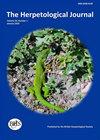Comparisons of image-matching software when identifying pool frog (Pelophylax lessonae) individuals from a reintroduced population
IF 1.1
4区 生物学
Q3 ZOOLOGY
引用次数: 2
Abstract
Photographic identification of individual animals is a non-invasive and cost-effective method that can provide demographic information on wild populations. This study aims to compare two photo-matching algorithms (Wild- ID and I3S-Spot) using a reintroduced population of pool frogs (Pelophylax lessonae) in the UK as a case study. We compared the following parameters 1) sex and age, 2) image quality, 3) image collection size and 4) processing time to evaluate successful image match rates. There were no significant differences in successful match rates found between sex and age groups. Wild-ID was more sensitive to image quality than I3S-Spot. There was a significant negative relationship between image collection size and successful match rates for I3S-Spot, however, no such relationship for Wild-ID. The findings of our study can be used by conservation practitioners to reduce workload and improve accuracy during population monitoring activities.从重新引入的种群中识别池蛙(Pelophylax lessonae)个体的图像匹配软件比较
动物个体的照片识别是一种非侵入性和成本效益高的方法,可以提供野生种群的人口统计信息。本研究旨在比较两种照片匹配算法(Wild- ID和I3S-Spot),以英国重新引入的池蛙(Pelophylax lessonae)为例进行研究。我们比较了以下参数1)性别和年龄,2)图像质量,3)图像采集大小和4)处理时间来评估成功的图像匹配率。在性别和年龄组之间,配对成功率没有显著差异。Wild-ID对图像质量的敏感度高于I3S-Spot。I3S-Spot的图像采集大小与匹配成功率呈显著负相关,而Wild-ID的图像采集大小与匹配成功率无显著负相关。我们的研究结果可为保育工作者减少工作量及提高监测工作的准确性提供参考。
本文章由计算机程序翻译,如有差异,请以英文原文为准。
求助全文
约1分钟内获得全文
求助全文
来源期刊

Herpetological Journal
生物-动物学
CiteScore
2.40
自引率
10.00%
发文量
25
审稿时长
>12 weeks
期刊介绍:
The Herpetological Journal is the Society''s prestigious quarterly scientific journal.
 求助内容:
求助内容: 应助结果提醒方式:
应助结果提醒方式:


